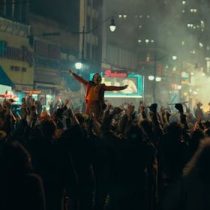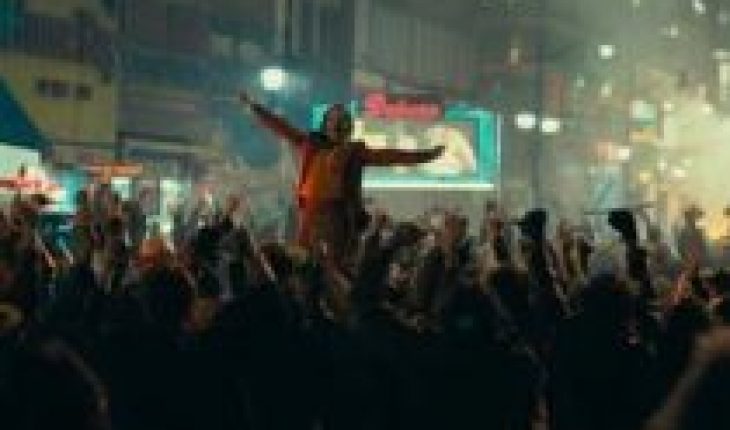
It is worth remembering these days, when it has been known that HBO has temporarily removed from its catalog Gone with the Wind (1939) for being supposedly racist, that cinema reflects life. Also, in these times of political correctness, it reflects that of all those other generations of any place and condition, whose “political corrections” were very different.
How can cinema help us reflect on this viral, audiovisual and sociocultural phenomenon? The networks, the overflowing emotion, the proximity of the election year in the US, The populism of Trump, the Covid-19… they don’t help you think all this quietly. Or, just, to think about it dry.
For this purpose, I propose five American films, great film classics, and all of them masterpieces of cinema, which obviate to a greater or lesser extent the politically correct. Because, as Italo Calvino theorized, they tend “to relegate the present to the category of background noise, but at the same time cannot do without that background noise”.
The five films are: Devil’s Doorway, Anthony Mann, 1950; To Kill a Mockingbird, Robert Mulligan, 1962; Do the Right Thing, Spike Lee, 1989; Gran Torino (Clint Eastwood, 2008); and Joker (Todd Philips, 2019).
Movies “wrong”
Apparently they are pure drama, but they also show generic traits of comedy, romance, even traces of musical. This hybridization makes it easier for her filmmakers to delve into the politically incorrectness of their respective eras: a white lawyer who falls in love with the Indian soldier (Devil’s Doorway); a black peasant accused of rape revealing that it was the white girl who actually harassed him (Kill a Mockingbird); the inevitability of latent violence in a multiethnic ward (Do the right thing); nostalgia for past glories that would now be considered authoritarian (Gran Torino); or the involuntary call to anarchy (Joker).
“Devil’s Door”. Metro-Goldwyn-Mayer
The term political correctness is polysemic, close to censorship or certain forcing of language, usually for ideological reasons. A forcing that would avoid offending social groups disadvantaged by sex, ethnicity, social class, etc. It is a cross-cutting concept that cannot be attributed to a particular ideology.
An example of our selection of films is worth: in Devil’s Doorway the protagonist is called “Indian”, a term that, since the 1960s in the US, political correctness replaced with that of “Native American”. Interestingly, it is obvious that they would be native “Americans”, so those from the rest of the continent might also be offended.
According to political correctness, there would still be a second racist trace in this film. I mean, the protagonist is a white actor with a face obscured by makeup (played by Rober Taylor). And yet can we think of anyone better than this actor, at the height of his career, who guaranteed the success of the film and, therefore, of his anti-racist proposal?
Political correctness as violence
In these films, political impropriety is often based on the entry into conflict with women – sometimes “empowered”, as in the exemplary start of Do the right thing – and always in relation to an emergence of violence. Therefore, the first cinematic lesson: political correctness easily leads to violence, because, as we have said, it implies an artificial forcing of language that triggers the emergence of ideologies and from there, to violence, there is only one step.
It is clearly seen in Devil’s Doorway, where conservative ideology would tell us that the protagonists should not unite and that the Indian must split their land with the other ranchers. The progressive would say that the protagonist should have been played by a Native American and that the lands belong only to him. The proof of violence is the bloody end in which cavalry saves no one at the last moment, as if so much political correction were a dead end.
“Do the right thing.” Universal Pictures
One last detail on political correctness: Joker is a glimpse of the so-called Woke culture that refers to “being awake” to social problems such as racism, with the beneficial influence of African-American politics and the Black Live Matters movement. However, this Culture Woke is not immune to the numbing alibi of political correctness, as have pointed out authors such as Douglas Murray in his work: The Madness of Crowds: Gender, Race and Identity (2019).
Identity and erasure of difference
Almost all the protagonists show a conflict that has to do with their racial identity and the rejection that it raises in places where, on the other hand, their role has been as decisive as that of the white Anglo-Saxon population: Indians, blacks, Asians, Latinos, etc. What these films tell us is that it would seem that these conflicts point to the incompatibility of the defense of one’s identity while political correctness advocates the erasure of differences. That’s what the Korean shopkeeper seems to say, do the right thing when the final cove begins: “I don’t white. I don’t white. I black. I black. I black.” Repeating it three times will not do you good, for the crowd that hears you laughs at him.
“Gran Torino”. Warner Bross
Interestingly, the only film in which we can find a solution comes from the director who is currently considered the most politically incorrect: Clint Eastwood. I mean his heroic self-sacrifice, Christological, in Gran Torino. As a good classical filmmaker, his act is symbolic and, therefore, enduring and, above all, one that can be welcomed by people of any colour or identity.
At the other end we have the Joker who, beaten in the depths of his identity, also sets out on the path of sacrifice, but the one who inflicts on others in a true sinister kerme. Thanks to the power of television, his vengeance becomes, without him seeking him, the trigger to make him the leader of anarchy, a conscious (or awakened) bloody rite.
In the remaining three examples, the outrageous defence of identity, as has already been pointed out, leads to violence. This is the second lesson. As Miss Masters (Paula Raymond) states at the end of Devils’ Door when her beloved falls in front of her as he salutes the US army that had awarded her the medal of honor: “It would be too bad it ever forgotten”, which in the subtitles wisely translates as “It would be dreadful to forget this lesson”, because it is a lesson and, again, with sacrifice in between.
Reflecting is not to solve
All five films build their stories as a moral narrative against racism. Will the third lesson be so obvious? Let us think about it slowly, because the classics, the masterpieces, are not mere pamphlets of public instruction, or they do not simply represent the interests of human rights groups or progressive political groups, however positive they are. No, this type of artistic work invites us, first of all, to have an aesthetic experience, that is, to something that removes the most sensitive fibers from our soul and, since it is an intense experience, with a conveniently short duration.
“Kill a Nightingale”. Universal Pictures
Therefore, this third lesson I think is about giving us enough time to reflect on issues on which we play the skin – and I don’t just mean its color – trying to fly over the immediacy of today. In this sense, cinema would be, even today, the closest thing to a ritual that would thus revalue their stories beyond background noise. This is what seems to happen, for example, in Killing a Mockingbird. The trial takes up almost the entire second half of the film, as a reflection within the story itself that, let us not forget, does not solve anything, but it does allow, at least, to think about it, and remember it.
In fact, these five films tell us, as I have detailed, how in the origin of racism the identity tends to grow and how, in general, the social response tends to divert its shot towards the politically correct. We are invited, then, to think slowly and deeply from racism, but not through abstract ideas, political play or solidarity activism because, as the philosopher Gustavo Bueno stated, this implies “being in solidarity against someone”.
Shutterstock / Bespaliy
Idealism, utopia? It may be, but just as cinema is able to prefigure the most gruesome nightmares for humans, indirectly it can also show the way to avoid them. If we identify with the characters in these works, we can live their conflicts as our own. Achieve a more real and near reflection than that proposed by virtually the great media conglomerates, think tanks or change.org’s that tie us up through social networks. To these, we need to tell you, with George P. Floyd: “I want to breathe.”
Lorenzo Javier Torres Hortelano, Full Professor of the Faculty of Communication Sciences, King Juan Carlos University
This article was originally published in The Conversation. Read the original.





